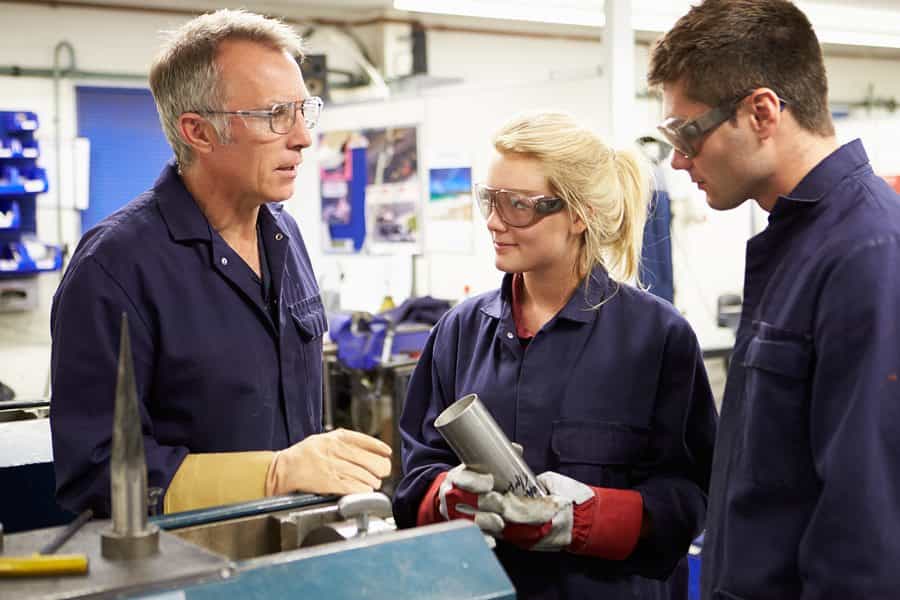Why You Should Keep Investing in Older Employees in the Manufacturing Workforce
November 3, 2017

Long the backbone of American industry, the manufacturing workforce is aging rapidly. With 27 percent of these workers over the age of 55, “manufacturers will need to fill an estimated 3.5 million jobs over the next decade,” according to the National Association of Manufacturers.
As a CEO, you need to support, nurture and train your aging workforce. This challenging effort is also a once-in-a-lifetime opportunity. Many older workers have profound knowledge of (and a deep sense of pride in) their work. The younger generation brings a whole new type of expertise to the table.
Provide your team with the tools and encouragement they need to share their skill sets and work together cohesively.
Training for Longer Careers
The aging workforce can tell you firsthand how technology is changing faster than ever. Automation, robotics, the IoT and other new technological advancements require skills that many older workers find difficult to learn.
Get your team over this learning hump by doing the following:
- Subsidize computer science and advanced manufacturing courses at technical institutes and colleges. Encourage participation by rearranging work schedules around classes. Offer pay incentives for high marks and perfect attendance.
- Invest in hands-on programs like Training Within Industry, which fosters cooperation between supervisors and employees, or the Manufacturing Extension Partnership, which focuses on training an aging workforce.
- Offer apprenticeships. These are no longer reserved for people starting a career. They offer older workers time and space to acquire new skills away from the pressure of expectations and quotas. The federal government provides grants and tax credits to entice companies to offer apprenticeships. Some states have their own programs that provide paid training.
Transferring Knowledge to the Next Generation
Older workers often feel ignored or pushed aside. As a reader told IndustryWeek: “I am surely the most experienced individual in the whole company… You’d think management would be picking my brain at every opportunity, but they don’t. They don’t even ask my opinion on things, and I continue to see them try things that were done 20 years ago — didn’t work then and don’t work now.”
The aging workforce carries rich institutional knowledge that finds no equal in a classroom. Let them teach and train a new generation.
BMW has seen the benefit of matching workers across generations firsthand. In 2007, the company launched the “2017 project” to integrate more experienced manufacturers with new technology. It also challenged younger workers’ misconceptions that the older generation would only slow production, as Fast Company reports. After putting the two groups on the same manufacturing line, BMW found that employee productivity increased by 7 percent over the decade.
Encourage this type of collaboration to increase morale among more experienced workers, and indicate to the new generation that your firm values collaboration and commitment.
Adjusting Physical Expectations
Manufacturing involves hard labor for any age, but it can be particularly tough for people with older backs and joints.
You should search for tools to help. See how you can redefine processes to account for your workforce’s changing physical needs and abilities.
For example, BMW’s 2017 project provided older workers with shoes that reduced the strain of standing. Longer breaks, adjusted workloads and flexible schedules will also provide your team with the tools they need to stay fresh.
The digitization of manufacturing will only accelerate. By developing a cohesive workforce, with multiple generations encouraged to learn from each other, you’ll create a more effective team that’s in tune with the future of the industry.
Recent Articles
Stay informed with Aprio.
Get industry news and leading insights delivered straight to your inbox.
